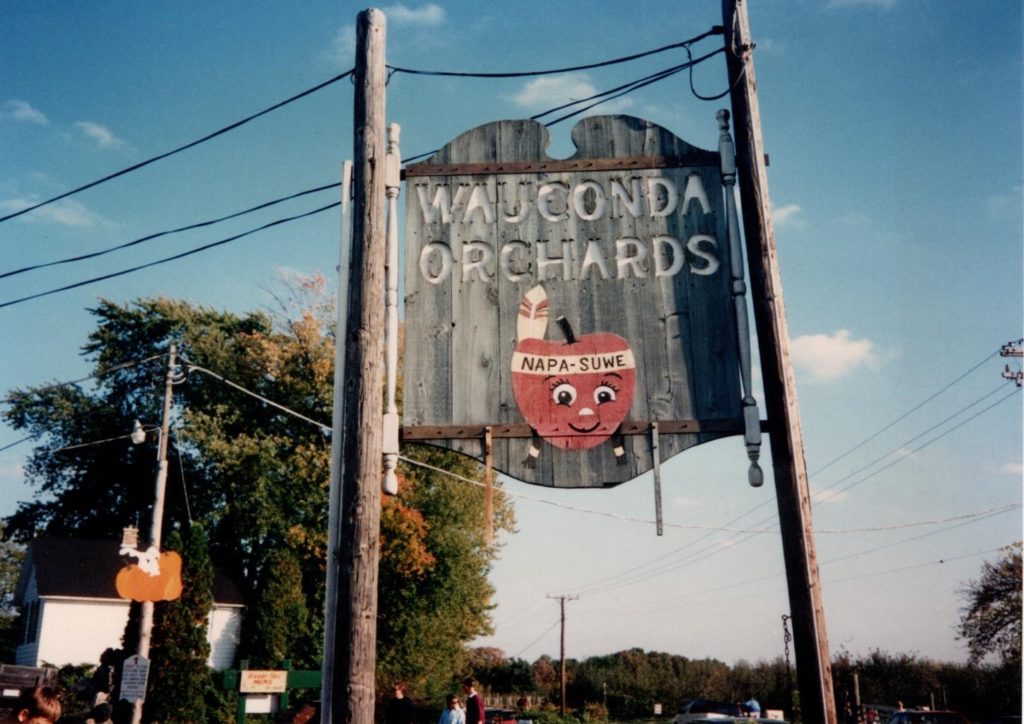
As the leaves of Summer begin their transformation from various shades of green to brilliant colors of red, orange and yellow, and as the cooler temperatures begin to get a bit nippy, we are instinctively drawn to red apples, orange pumpkins and yellow mums; it’s AUTUMN! It is time to seek out the apple orchards and pumpkin farms. WAUCONDA ORCHARDS had it all and much, much more!

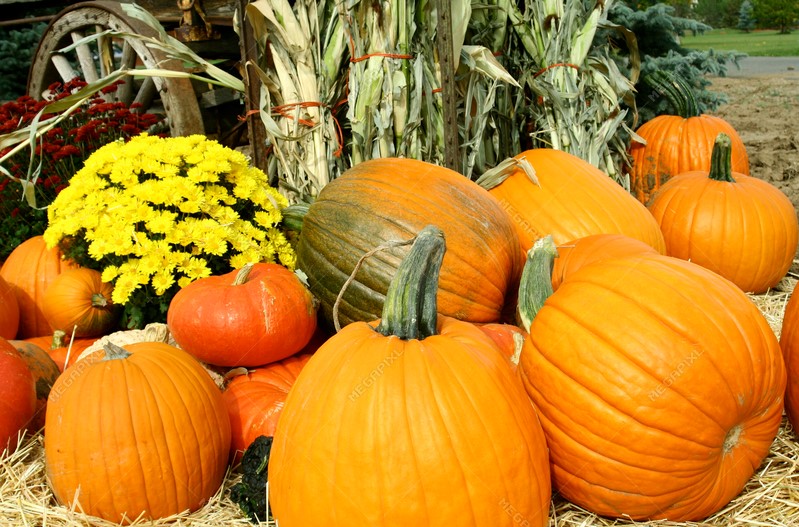
As a kid, I remember our family driving thirty miles from Zion, Illinois into the country to Fairfield Road and Wauconda Orchards. My Oakes ancestors helped establish the nearby city of Wauconda. We traveled on some of the same roads my great-grandfather, Lancelot Oakes traveled as he drove the stage coach from Wauconda to Waukegan delivering mail and passengers back in the 1800’s. It was also during this time period that John Chapman, better known as ‘Johnny Appleseed,’ walked through West Virginia, Pennsylvania, Ohio, Indiana and into Illinois planting apple trees and orchards as he went.



In 1951, a year in which many exceptional people were born, Richard and Marge Breeden, began the process of fulfilling their dream by purchasing 75 acres on Fairfield Road. They planted 500 apple trees and Wauconda Orchards was born. They soon increased the orchard to over 10,000 trees, becoming the largest apple orchard in Northern Illinois.
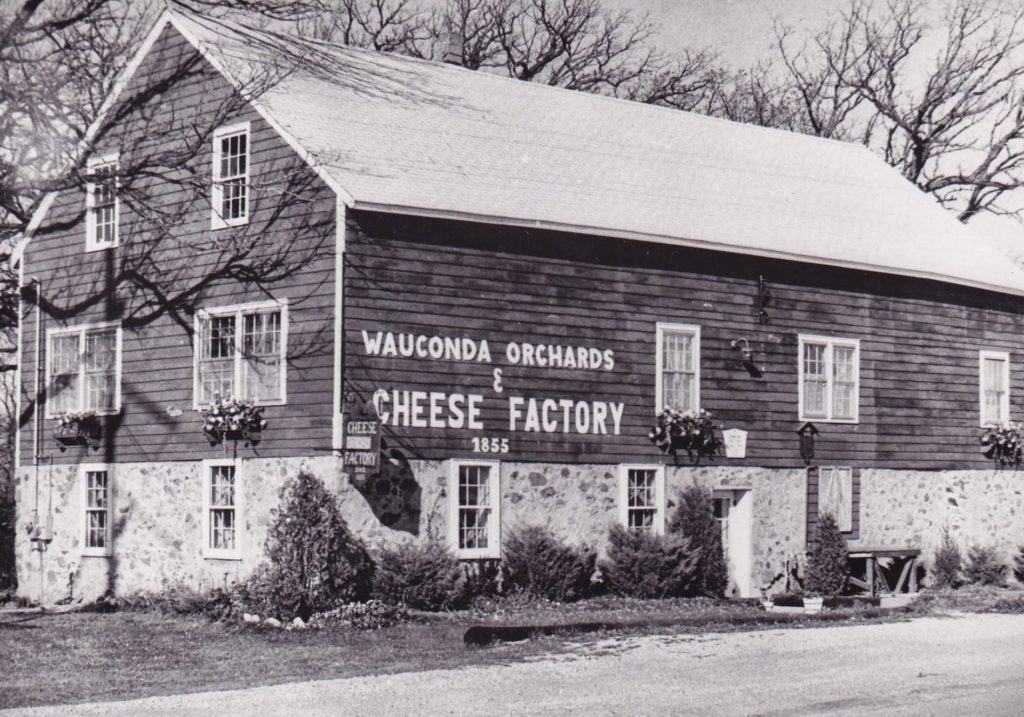
The Breedens deserve a lot of credit for all the effort they put into making the orchard much more than just apples. It was such an amazing place with so much to offer. They soon completed The Country Store, The Apple Kitchen Cafe and the Cider Mill.
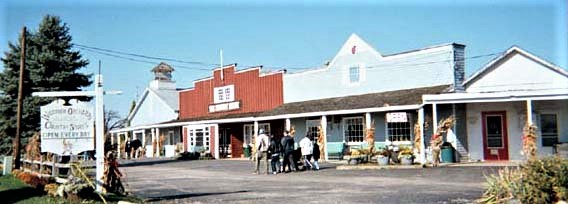

There was literally something for everyone. They had a knack for sharing the entire orchard experience with their guests and customers. There was a greenhouse and a cheese factory in the old barn. You could choose to go on a hayride, a pony ride or just stroll through the pumpkins to find your favorite one.



Honey bees are quite necessary for pollinating the apple trees and many hives were, of course on the property. But the Breedens also built a very large hive into the wall of the Country Store with glass sides so we could see the bees making honey in the combs either from inside the store or from the outside, where the bees would come and go.
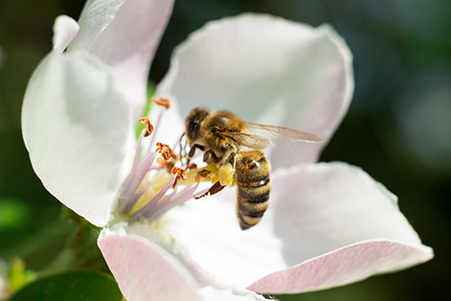

Apparently I did not pay very good attention to the process of pollination when several years later I planted a dwarf Jonathan apple tree in my yard. Eventually in the spring, I enjoyed seeing the blossoms appear on the branches, but never saw any apples. I thought it just needed to mature a bit more. But the apples never came, so I knew something was wrong. I did some research and discovered I had to have more than one apple tree. I had one pear tree and had an abundance of pears every year, so one apple tree made sense to me. But I found out that pear trees are self-pollinating and apple trees are not. Apple blossoms must be pollinated by a different variety of apple, but since differing apple varieties bloom at different times during the Spring, it is necessary to match blooming times. I planted another variety that was supposed to bloom at the same time as the Jonathan, but it did not, so now I had two blooming apple trees and still no apples. So, I now had to plant two more different varieties which would bloom with the previous two trees. Finally I had apples and a mini orchard!
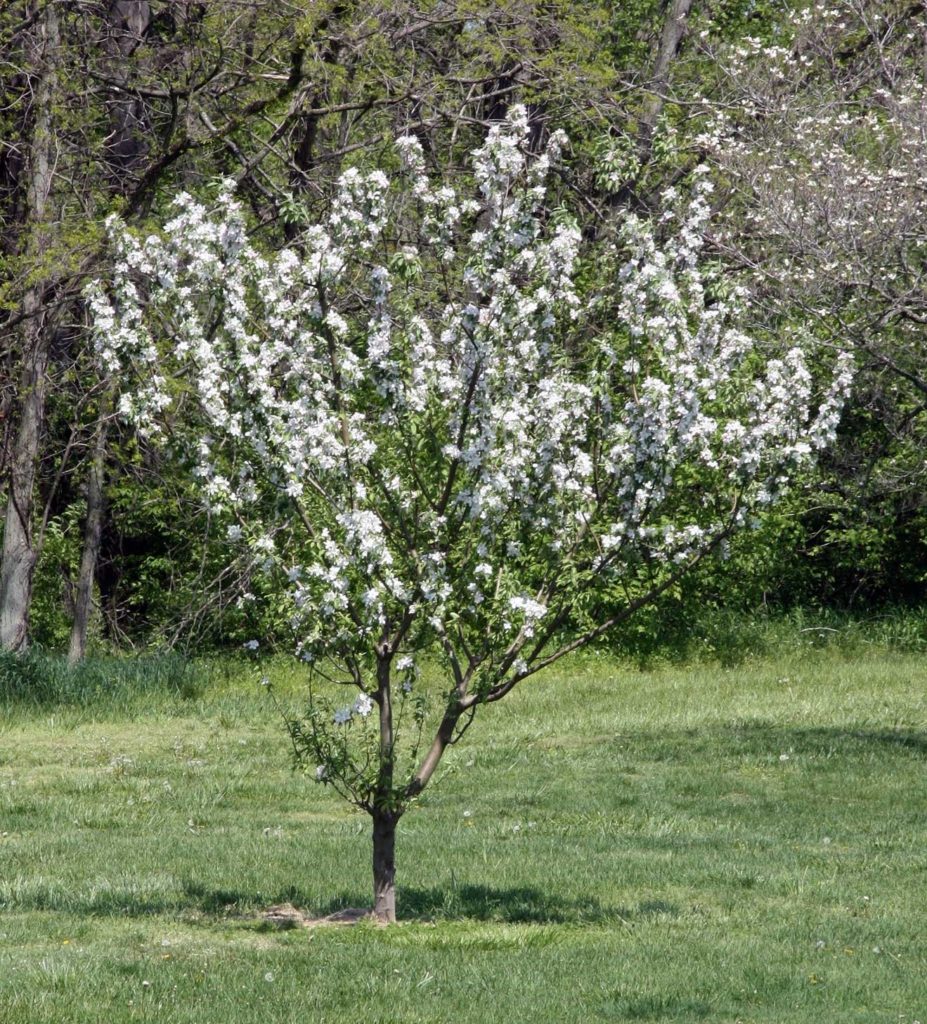
The apples at Wauconda Orchards were sorted by size and variety and bagged up and some were loaded into the cider mill to fill jugs of cider. These machines could have been set up in a remote building, but it was all done in the building on the far left. We could view the sorting machines and mill through large glass windows. Many school groups would come to the orchard, as it was quite an educational experience. Over 100,000 visitors came each year to share in this wonderful Fall tradition, as did I, eventually bringing my own kids, too.


Ladybugs also played an important role in the orchard. Ladybugs love to eat aphids and other plant-eating pests. One ladybug can eat up to 5,000 insects in its short, one-year lifetime. The Breedens not only put the ladybugs to work as a natural pest control, but you could purchase a bag full in the Country Store to take home to your garden.


The Country Store had a walk-in cooler filled with apples and jugs of cider. Every imaginable apple-related item was on the shelves, such as peelers and corers, etc. Also, they had gift baskets, jams, jellies, honey, apple signs, dish towels, candy and on and on – just picture Cracker Barrel’s gift store. Of course, many people liked to head out into the apple orchards and ‘pick-your-own.’ It would not take very long to fill up a bushel basket. We would pick a basket of Jonathans and keep them in the basement at home.



After a busy day at the orchard, most people headed to The Apple Kitchen Cafe for some refreshments. Several lunch items were served as well as everything apple; apple pie, apple dumplings, taffy apples, cider and of course, donuts. There were several cafe tables and chairs, but my favorite spot was next door. I would get some fresh cider and some cinnamon donuts and go sit by the stone fireplace in a cozy breezeway-type room between the cafe and the Country store. I loved that spot. Weren’t very many places to sit, so when you got one, you wanted to stay awhile. Love the smell of wood burning, apple cider and cinnamon!


After moving to Tennessee, I visited local apple orchards in the Autumn, searching for the Wauconda Orchards experience. Some were nice, but none could compare to the real thing. I returned to Illinois in the Fall one year longing to visit Wauconda Orchards again, but the Breedens retired in 2001 and sold everything. I would have thought the family orchard would have been passed on to the next generation to continue the traditions and legacy that was a part of so many other families. But as with so many things, ‘business is business’ and ‘how can the most money be made,’ won out in the end. The housing subdivision that used to be Wauconda Orchards is called, “Orchard Hills” and the road into it is named, “Apple Valley Way.” So sad, so sad. But, I am left with many great, wonderful memories of being there, which allow me to still visit Wauconda Orchards every Autumn!
oh, so fun to read, Bob! It made me wish they had found someone to carry on what they’d worked so hard to develop. It does seem like your parents took our family there while we were on a. visit to Zion.
We have had many very nice trips to apple orchards with our children in Minnesota. And I think likely that I have been to this orchard, but I am not sure. It is sad that it was sold and not kept as an orchard.
A comment for clarity would be to add a reference to the “Wauconda Orchard” after your description of your own mini orchard. “Finally I had apples and a mini orchard! The (Wauconda Orchard) apples were sorted by …”
Otherwise it sounds like you started sorting and selling your own apples.